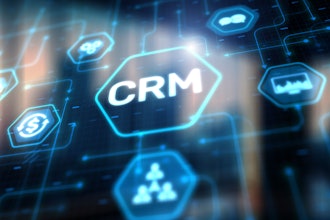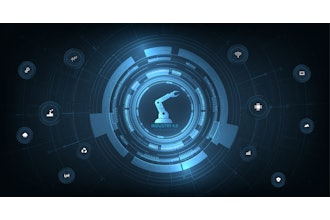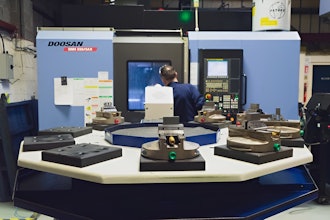
Your ERP system transformed back-office operations, but it addresses only half of your business equation. While ERP excels at post-sale management, it leaves a critical gap in managing relationships that determine customer loyalty versus defection.
In B2B manufacturing and distribution, acquiring customers through industry relationships is often straightforward. The real challenge lies in delivering exceptional customer experiences that prevent defection and maximize lifetime value.
This article explores how integrating CRM with existing ERP creates a unified customer experience platform protecting your most valuable asset: customer relationships.
In this article you will learn:
The hidden costs of customer defection in manufacturing and distribution.
Why fragmented systems create customer experience gaps that compound over time.
How ERP limitations prevent modern customer experience delivery.
Why Net at Work's Creatio solution outperforms other CRM solutions for manufacturers.
Case studies showing measurable customer experience improvements.
Stakeholder-specific ROI calculations for CFOs, COOs, and Sales Leadership.
Frequently asked questions about CRM-ERP integrations.
The Customer Retention Crisis in Manufacturing
In manufacturing and distribution, losing a customer extends far beyond losing this quarter's orders. It represents losing years of relationship investment and future revenue potential. Consider these critical realities facing today's manufacturers:
High Switching Costs Work Both Ways: While customers face expensive switching costs when changing suppliers, manufacturers face equally expensive replacement costs when losing established customers. The process of understanding customer specifications, quality requirements, and operational preferences represents significant investments that disappear with customer defection.
Relationship Dependency: B2B manufacturing relationships often span decades, making each customer exponentially more valuable over time. Unlike transactional B2B sales, manufacturing partnerships deepen through shared problem-solving, custom solutions, and operational integration. This relationship depth creates compound value that grows with tenure.
Referral Impact: One dissatisfied customer can influence multiple prospects within your industry network. Manufacturing industries are typically tight-knit communities where reputation travels quickly. A single negative experience can close doors to entire market segments through word-of-mouth influence.
Service Expectations: Today's B2B buyers expect B2C-level service experiences, even in complex manufacturing relationships. The Amazon effect has raised expectations for immediate information access, proactive communication, and seamless problem resolution across all business interactions.
Why Customer Experience Gaps Develop
The root cause isn't poor intentions or inadequate resources. It's fragmented systems that prevent your team from delivering cohesive customer experiences despite best efforts.
Scenario 1: The Service Breakdown. Your customer calls with an urgent quality issue affecting their production line. Your service representative can access the complaint history and previous resolutions but cannot see the customer's current order status, payment terms, or recent interactions with your sales team.
Meanwhile, your sales representative remains unaware of the service issues when they call about the next order opportunity. The customer experiences this as poor coordination and questions whether your organization truly understands their business importance.
Scenario 2: The Proactive Opportunity Missed. Your ERP system clearly shows that a long-term customer's order patterns have changed significantly. They're ordering 30% less than their historical average over the past six months. This could signal budget constraints, competitive pressure, changing market conditions, or evolving business needs.
Without integrated systems, this early warning signal sits invisible in your ERP database while your customer relationship slowly deteriorates. Your sales team continues operating under outdated assumptions while the customer evaluates alternatives.
Scenario 3: The Escalation Failure. A customer's payment is delayed beyond terms, triggering automatic hold procedures in your ERP system. However, your sales team isn't automatically notified of the credit hold, and they continue promising delivery dates that operations cannot meet.
The customer experiences mixed messages and begins questioning your organization's reliability and internal communication. What started as a simple payment timing issue escalates into a relationship-threatening credibility problem.
The True Cost of Disconnected Customer Management
Based on comprehensive analysis of 12 manufacturing clients implementing integrated CRM-ERP solutions over 18 months, disconnected systems create measurable impacts on customer relationships across multiple dimensions:
Service Response Delays: When customer service representatives cannot immediately access complete order history, current shipping status, and previous interaction context, average response times increase dramatically.
Our analysis shows response times dropping from 24-48 hours to 4-6 hours after integration, representing a 75% reduction in resolution time. This improvement directly correlates with customer satisfaction improvements.
Missed Retention Signals: Early warning indicators of customer dissatisfaction exist throughout your systems but remain invisible to customer-facing teams. Changed ordering patterns, increased service calls, payment delays, and complaint frequency often predict customer defection months in advance. Without integrated visibility, these signals go unnoticed until competitive displacement occurs.
Administrative Overhead: Customer-facing teams spend 12-15 hours per week switching between systems, manually transferring data, and reconciling conflicting information. This represents time that could be invested in relationship building, proactive problem-solving, and strategic account development. The opportunity cost extends beyond efficiency to relationship quality and competitive positioning.
Reactive vs. Proactive Service: Disconnected systems force organizations into reactive mode, responding to problems after customers complain rather than identifying and addressing issues proactively. This reactive posture damages customer confidence and positions your organization as a vendor rather than a strategic partner.
Methodology: Pre/post implementation surveys, system usage analytics, customer satisfaction tracking across discrete and process manufacturers with $15-85M annual revenue.
The Compounding Effect
These individual touchpoint failures compound over time, creating cumulative relationship damage. A customer who experiences one service breakdown might forgive the incident as an anomaly. However, when multiple departments seem uncoordinated and uninformed about their business, customers begin questioning whether your organization truly values their relationship and partnership.
Why ERP Alone Can't Deliver Modern Customer Experience
Your ERP system excels at operational efficiency: managing inventory levels, processing orders accurately, tracking financial performance, and maintaining data integrity. These capabilities form the operational foundation of successful manufacturing businesses. However, ERP systems weren't designed for relationship management or customer experience orchestration.
ERP Handles Transactions, Not Relationships: ERP systems track what customers buy, when they buy, and how much they pay. However, they don't capture why customers buy, how satisfied they are with your service, what might cause them to switch suppliers, or what opportunities exist for relationship expansion. This transactional focus misses the relationship intelligence that drives long-term customer value.
Limited Customer Communication Tools: ERP systems typically lack the communication tracking, automated follow-up capabilities, and relationship management tools that modern customers expect. They cannot orchestrate multi-channel customer communications or maintain comprehensive interaction histories across touchpoints.
Departmental Silos: ERP data often remains within operational teams while customer-facing teams work in separate systems. This creates information gaps at critical customer touchpoints where relationship decisions are made and customer perceptions are formed.
The Integration Imperative
The solution isn't replacing your ERP investment. It's connecting ERP capabilities with purpose-built customer relationship management tools that create a unified view of each customer relationship. This integration transforms transactional data into relationship intelligence.
The Net at Work Creatio Advantage: Manufacturing-Focused Customer Experience
Manufacturing customer relationships require specialized approaches that generic CRM platforms struggle to deliver effectively:
Complex Product Configurations: Manufacturing often involves custom specifications, technical requirements, and multi-component orders requiring sophisticated data management capabilities. Generic CRM platforms lack the flexibility to handle these complexities without extensive customization.
Long Relationship Lifecycles: Manufacturing relationships span years or decades, demanding different relationship management approaches than transactional B2B sales. The customer journey includes multiple phases: specification development, pilot programs, production scaling, ongoing support, and continuous improvement initiatives.
Service Integration Requirements: Manufacturing customers expect seamless coordination between sales, service, and operations teams. They need unified visibility into order status, service history, technical specifications, and relationship context across all interactions.
Net at Work Delivers Manufacturing-Grade CRM Integration
Net at Work delivers manufacturing-grade no-code CRM workflows with Sage X3 integration. Net at Work’s proven implementation methodology is managed by a team with 25 years of CRM experience.
Deep ERP Integration: Our Sage X3 integration provides bidirectional data flow for orders, accounts, contacts, and service requests. Current production deployments demonstrate seamless real-time synchronization, with full workflow automation capabilities available for immediate implementation. This integration eliminates manual data entry and ensures consistent information across systems.
Manufacturing Workflow Automation: Pre-built processes for quote-to-order management, RMA handling, vendor relationship management, and service request automation eliminate the manual coordination that creates customer experience gaps. These workflows are based on manufacturing best practices and proven implementation experience.
No-Code Customization: When your business processes change or you need new automation capabilities, your team can modify workflows without requiring development resources. This ensures your CRM evolves with your customer needs and business requirements without ongoing IT dependency.
Proactive Relationship Management: Automated alerts and workflows help identify and address potential customer issues before they impact relationships. Early warning systems trigger proactive outreach when customer behavior patterns indicate risk or opportunity.
Frequently Asked Questions
Q: What are the benefits of integrating CRM with ERP for manufacturing companies?
A: CRM-ERP integration provides unified customer visibility, automated workflows, proactive service management, and improved customer retention. Manufacturing companies typically see 75% faster service response times, 25% higher customer satisfaction scores, and 12-18% improvement in customer retention rates. The integration eliminates data silos and enables proactive relationship management.
Q: How does CRM integration improve customer service in manufacturing?
A: Integration eliminates information silos by providing service teams instant access to order history, payment status, and previous interactions. This enables faster problem resolution, proactive issue identification, and consistent communication across all customer touchpoints. Service representatives can resolve issues 75% faster with complete customer context immediately available.
Q: Can CRM integration help reduce customer churn in B2B manufacturing?
A: Yes. Integrated systems provide early warning alerts when customer behavior patterns indicate risk, such as decreased order volumes or increased service requests. This enables proactive retention efforts before customers consider switching suppliers. Manufacturing companies typically see 12-18% improvement in customer retention through automated early warning systems and proactive account management.
Q: What CRM features are most important for manufacturing companies?
A: Essential features include quote-to-order automation, RMA management, service request tracking, customer portal access, inventory visibility, and bidirectional ERP synchronization. Manufacturing CRM should also support complex product configurations, long sales cycles, and committee-based purchasing decisions common in B2B manufacturing environments.
To further assist in your digital transformation strategies, consider checking out the following webinars:
- Drive 100% User Adoption Easily. Are you struggling with low CRM adoption rates? Many mid-sized businesses invest in powerful tools but fail to get their teams fully onboard. This live event is tailored for Operations Leaders, Sales Managers, and IT Leaders who want actionable strategies for achieving complete user adoption. In just 45 minutes, you'll discover:
- A proven change management strategy for full CRM adoption.
- Key phases of adoption: launch, active usage, and value recognition.
- How executive sponsors, champions, and trainers play critical roles in success.
- Techniques to track ROI, drive leadership advocacy, and ensure continuous training.
- Metrics that measure engagement and improve forecast accuracy.
- Incentive programs that inspire teams to fully embrace CRM tools.
- Join Bill Hoffman as he shares his expertise on turning your CRM into a fully adopted asset that drives measurable business.
- Turn CRM Chaos Into Revenue Growth. Are manual processes and poor user adoption killing your CRM's potential? Many businesses invest in CRM technology only to see disappointing results due to low adoption rates and disconnected workflows. This live event reveals how to transform your underperforming CRM into a revenue-driving powerhouse. You'll discover proven strategies that leading companies use to achieve 100% user adoption and measurable business growth. In this 45-minute session, you'll learn:
- How to eliminate manual data entry and automate critical business processes that save hours each week.
- 3 proven strategies to drive complete user adoption across sales, marketing, and customer service teams.
- The secret to connecting CRM with your existing systems without expensive custom development.
- Examples from companies that increased revenue by 25% through smarter CRM implementation.
- Attending this live event will help you break free from CRM frustration and finally achieve the business transformation you expected when you first invested in customer relationship management technology.
- Also available for on-demand viewing are Empowering Manufacturers with Modern CRM and Unlock Success with Smarter CRM.























